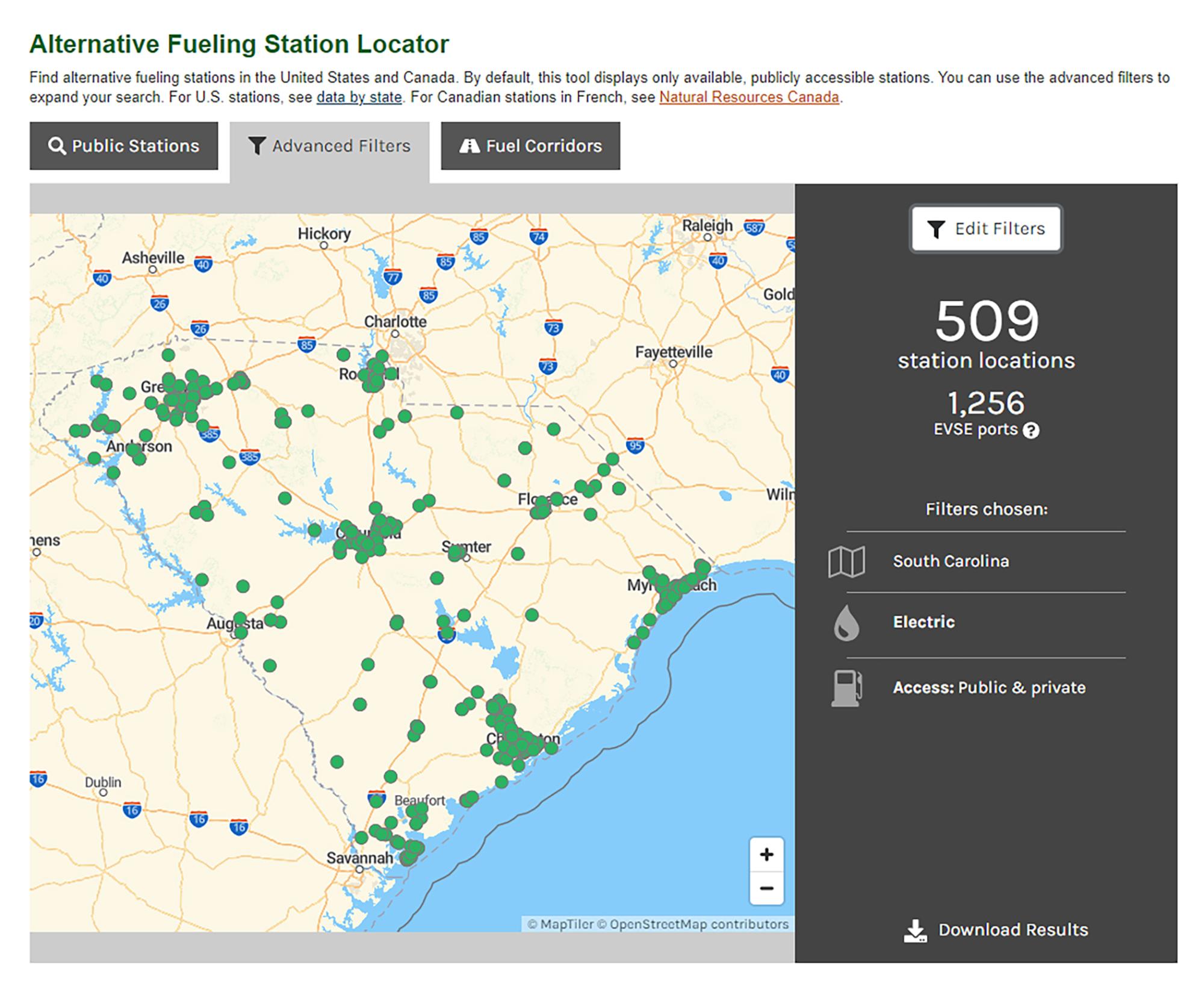In 2017, the number of electric vehicle, or EV, registrations in South Carolina — battery EVs and plug-in hybrid EVs — stood at 2,790. By 2022, it grew to 20,239.
Recent economic development announcements have also pointed toward EVs becoming a significant commercial force in South Carolina. From August 2022 to August 2023, private industry announced 20 new clean energy projects in the state, totaling $11.17 billion and creating 13,543 jobs. These include $3.5 billion for a Redwood Materials battery recycling facility, $2 billion for Scout Motors EV manufacturing, and $1.7 billion for BMW EV and EV battery manufacturing.
“We're one of the few states that really has the whole lifecycle of electric vehicles being made or produced or processed in South Carolina — anywhere from processing critical minerals to making the batteries to making the cars themselves, to recycling,” said Sara Bazemore, director of the SC Energy Office.
In October, Bazemore presented to the SC Community Development Association on the accelerating development of EV charging infrastructure in South Carolina. She was joined by Rene Kelly, the clean transportation coordinator for the SC Energy Office and director of the Palmetto Clean Fuels Coalition.
The growth of the EV industry, just like the growth of South Carolina’s population overall, has its challenges.
“We've got to figure out how we're going to make sure everybody can have affordable power for their homes and for these electric vehicles, as these automakers are moving more and more towards electric vehicles,” Bazemore said. “There's a lot of federal funding that is on the horizon, some available, some not quite yet.”
Kelly drew attention to the difference between the three levels of EV charging. Level 1 charging using an ordinary 120-volt outlet is by far the most time-consuming, typically taking 40 to 50 hours and therefore limited to residential applications. Level 2 chargers, by far the most common type installed now, will often take four to 10 hours. These are the charger types found not only in homes but also in public spaces like offices, retailers and restaurants. Level 3 chargers can take 15 minutes to an hour, and are the types used for a quick, on-the-road stop, but require dedicated electrical service for 480 volts of direct current.
So far, EV registrations have clustered in the most metropolitan parts of the state. Charging stations have grown in the same locations, but they have also followed major highways, especially Interstate 95.

Kelly noted that South Carolina saw a 19% increase in charging stations from late 2021 through mid-2022, and added that “we expect these percentages to increase, especially with the funding that’s coming down.”
Some of that funding is coming from the National EV Infrastructure, or NEVI, Program, aimed at establishing 500,000 EV charging stations by 2030 — a fund from which the SC Department of Transportation has received $70 million for five years. NEVI also has a Charging & Fueling Infrastructure program, with $2.5 billion available in competitive grants for publicly accessible EV charging and alternative fueling projects.
The SC Energy Office and the Palmetto Clean Fuels Coalition also launched the SC Electric Vehicle Stakeholder Initiative to promote EV deployment, including the “PLUGinSC” campaign of branding and consistent statewide signage to help drivers identify places to charge.
Bazemore and Kelly highlighted the value of getting charging stations listed on the Alternative Fueling Station Locator of the U.S. Department of Energy, found online, which counts more than 500 stations and 1,200 charging ports in South Carolina.
They also identified questions for municipal officials to ask themselves about any EV chargers they offer. Those that own chargers should think about whether they are publicly accessible and listed on the AFDC station locator website. Those looking to provide charging infrastructure, she said, should ask themselves where they intend to place the chargers, and whether there is enough electrical capacity at the location to support the location, and what kind of public and private investments will help pay for it.
